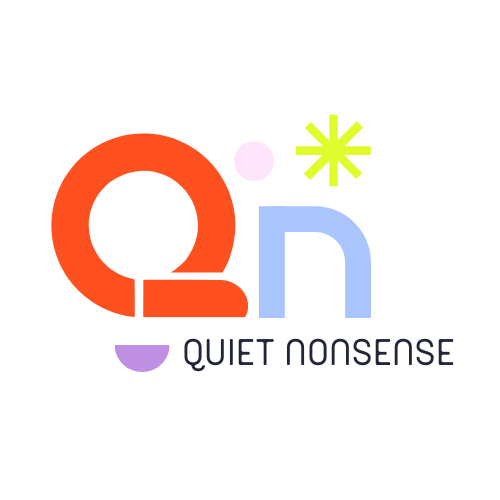From Idea to Execution: The Content Creation Process Explained
Creating compelling content is both an art and a science. At The Quiet Nonsense, we know that a successful content strategy is more than just writing words on a page. It's about crafting stories that resonate, inform, and inspire your audience. In this blog post, we’ll take you through the entire content creation process, from the initial idea to the final execution, revealing the secrets behind producing engaging and effective content.
1. Ideation: Sparking Creativity
Every great piece of content starts with a spark of inspiration. The ideation phase is all about generating ideas that align with your brand's goals and resonate with your target audience.
Steps in the Ideation Process:
Brainstorming Sessions: Gather your team for brainstorming sessions to generate a wide range of ideas. Encourage creativity and out-of-the-box thinking.
Audience Research: Understand your audience's interests, pain points, and preferences by conducting surveys, social media listening, and analyzing website analytics.
Competitor Analysis: Look at what your competitors are doing well and identify gaps that you can fill with your unique content.
2. Research: Laying the Groundwork
Once you have a solid idea, the next step is thorough research. This ensures your content is accurate, informative, and valuable to your audience.
Research Techniques:
Keyword Research: Use tools like Google Keyword Planner, SEMrush, or Ahrefs to find relevant keywords and phrases that your audience is searching for.
Data Gathering: Collect data from reliable sources to support your content. This can include industry reports, academic studies, or expert opinions.
Content Audit: Review your existing content to identify what has worked well in the past and what can be improved.
3. Planning: Mapping Out the Content
Planning is crucial to ensure your content creation process is organized and efficient. This phase involves outlining the structure of your content and setting clear goals.
Planning Steps:
Content Outline: Create a detailed outline that includes headings, subheadings, and key points you want to cover. This helps maintain a logical flow and ensures all important aspects are addressed.
Editorial Calendar: Develop an editorial calendar to schedule content creation and publication. This keeps your team on track and ensures consistent posting.
Goal Setting: Define clear objectives for your content, such as increasing website traffic, generating leads, or boosting engagement.
4. Creation: Bringing Ideas to Life
This is where the magic happens. The creation phase involves writing, designing, and producing the content. It's important to maintain your brand's voice and ensure high quality.
Content Creation Tips:
Writing: Focus on creating clear, concise, and engaging content. Use storytelling techniques to make your content more relatable and memorable.
Design: Incorporate visuals such as images, infographics, and videos to enhance your content and make it more appealing.
Editing: Proofread and edit your content to eliminate errors and ensure it aligns with your brand's standards.
5. Optimization: Enhancing Visibility
To maximize the reach and impact of your content, it's essential to optimize it for search engines and social media.
Optimization Strategies:
SEO: Optimize your content with relevant keywords, meta descriptions, and alt tags. Ensure your content is structured with proper headings and subheadings.
Social Media: Craft compelling social media posts that highlight key points of your content and encourage sharing. Use hashtags and tagging to increase visibility.
Internal Linking: Link to other relevant pages on your website to keep visitors engaged and improve your site's SEO.
6. Publication: Sharing with the World
With your content polished and optimized, it's time to share it with your audience. The publication phase involves scheduling and posting your content across various channels.
Publication Tips:
Timing: Publish your content at optimal times when your audience is most active. Use analytics tools to determine the best times for your specific audience.
Cross-Promotion: Promote your content across multiple platforms, including your website, social media, email newsletters, and industry forums.
Engagement: Encourage readers to engage with your content by asking questions, inviting comments, and sharing calls-to-action.
7. Analysis: Measuring Success
The final phase of the content creation process is analysis. This involves evaluating the performance of your content and identifying areas for improvement.
Analysis Techniques:
Analytics Tools: Use tools like Google Analytics, social media insights, and content management systems to track metrics such as page views, engagement rates, and conversions.
Feedback: Gather feedback from your audience through comments, surveys, and direct messages to understand what they liked and what can be improved.
Continuous Improvement: Use the insights gained from your analysis to refine your content strategy and make data-driven decisions for future content.
The content creation process is a dynamic and iterative journey that requires creativity, planning, and strategic execution. At The Quiet Nonsense, we're dedicated to helping businesses like yours navigate this process and create content that captivates and converts. Ready to turn your ideas into impactful content? Contact us today, and let's start creating something extraordinary together!
